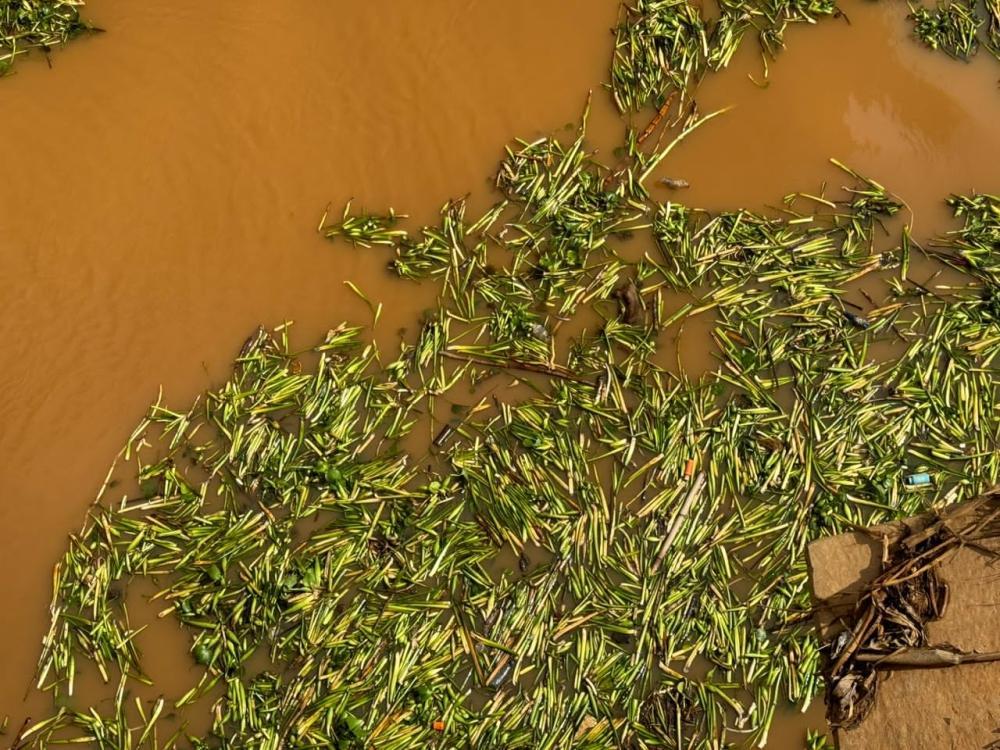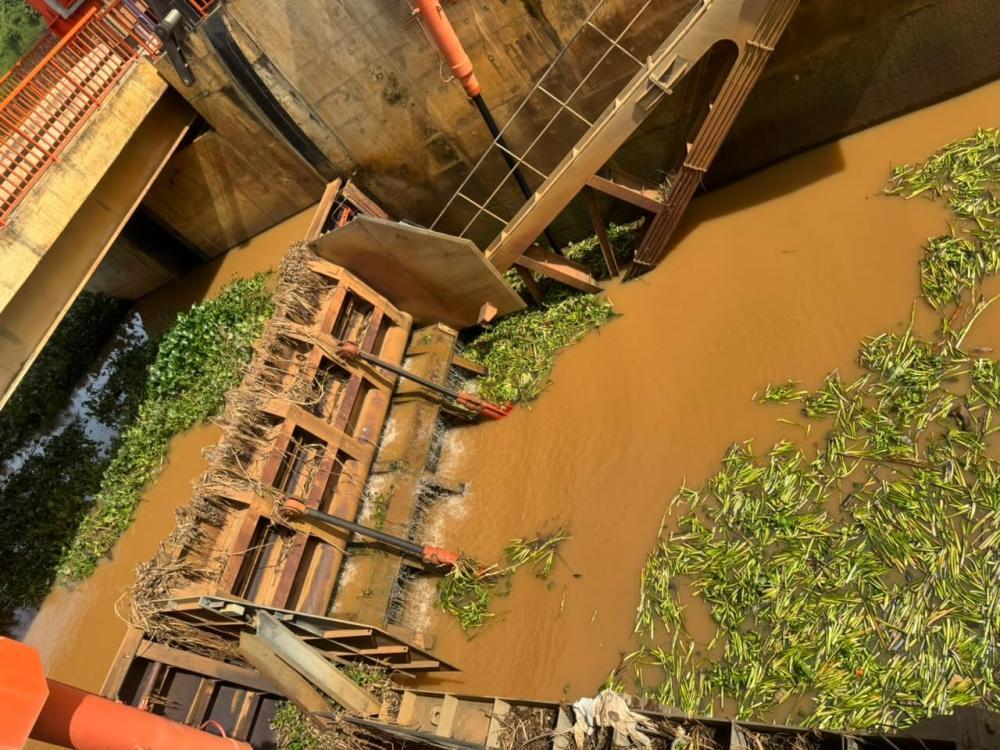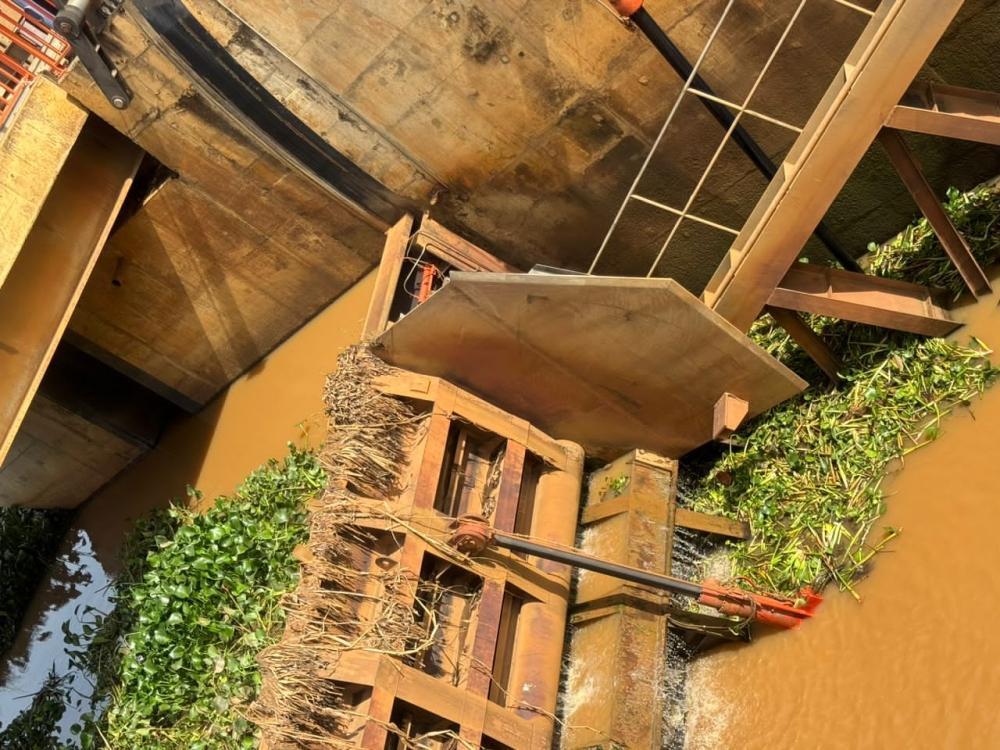Africa-Press – Rwanda. In a bid to protect power generation at the Rusumo Hydroelectric Power Plant, floating booms will soon be deployed on the Akagera River to halt the advance of invasive water hyacinth.
The Akagera River—which flows between Rwanda, Tanzania, and Burundi and is regarded as one of the Nile’s most distant sources—transports an estimated 14.6 tonnes of water hyacinth daily.
This fast-growing aquatic plant is clogging water intakes at the Rusumo plant, reducing water flow and slashing electricity production by about 5 megawatts (MW) per day.
The plant, which supplies 27 MW each to Rwanda, Tanzania, and Burundi, is increasingly threatened by the weed.
“To address the issue, we plan to install floating booms—barriers that block debris and invasive plants like water hyacinth from reaching the intake,” said Patrick Lwesya, the plant’s manager. “The hyacinths have been here for a long time, but they can be removed.”
Floating booms are long, flexible barriers placed on the water’s surface to intercept floating debris. Often angled to guide unwanted vegetation into collection zones, they simplify removal—mechanically or manually—and help prevent turbine blockages.
“By stopping the hyacinth before it reaches the turbines, the booms will help maintain stable power generation and reduce maintenance,” said Celestin Nshimirimana, an electrical engineer at the power station.
Efforts are underway across the region to repurpose water hyacinth, transforming it into useful products and mitigating its impact on ecosystems.
“The community could use the plants as animal feed or manure, so they are not a complete waste,” Lwesya said. “Currently, to manage the plants, we sometimes open the gates and push them downstream. We also flush the intake daily.”
Emmanuel Rukundo, Director General of the Rwanda Water Resources Board, said the government is turning harvested water hyacinth from lakes and wetlands connected to the Akagera River into various products.
“Water hyacinth is among the most problematic aquatic invasive species in Rwanda and the wider region,” he said. “Over the past decade, especially in the Eastern Province, several initiatives have been rolled out to control its spread.”
In Lake Cyohoha, mechanical harvesters are in use, while manual removal—largely by cooperatives and locals—is underway in other water bodies. The harvested plant is used for compost, handicrafts, and even biogas production.
Bugesera women lead the way in Innovation
In Bugesera District, women’s cooperatives are turning dried water hyacinth into baskets, mats, bags, bricks, furniture, sandals, hats, lampshades, and decorative items sold locally and abroad.
“We let the plant dry for about seven days before weaving different products based on orders,” said Perusi Mukamihigo, a cooperative member.
Research shows compost made from water hyacinth improves soil fertility and boosts crop yields. It’s also being explored as a cost-effective animal feed alternative.
The government’s Supporting Ecosystem Rehabilitation and Protection for Pro-Poor Green Growth Programme promotes removing water hyacinth from lakes like Lake Ihema, which has shrunk significantly—partly due to the weed’s spread—and converting it into organic fertiliser and biogas.
While water hyacinth poses a growing threat to power generation and aquatic biodiversity, Rwanda and its neighbours are betting on innovation and collaboration—starting with floating booms—to turn this environmental nuisance into a valuable asset.
Akagera River transports an estimated 14.6 tonnes of water hyacinth daily.
For More News And Analysis About Rwanda Follow Africa-Press








